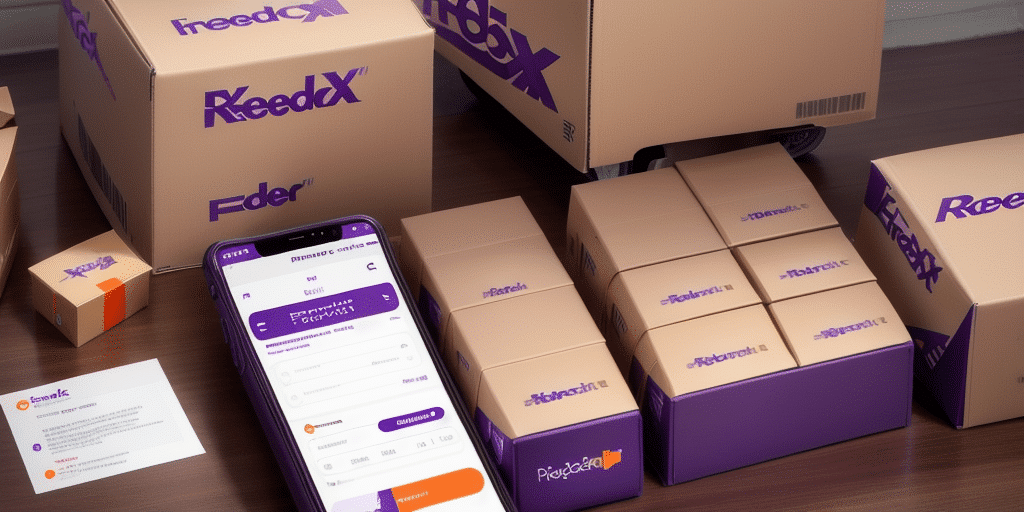Understanding the FedEx Ship Manager Logo: History and Evolution
The FedEx Ship Manager logo has been a cornerstone of the company's branding since its inception in 1971. Originally branded as "Federal Express," the logo featured a bold font that emphasized reliability and strength. In 1994, FedEx rebranded to simply "FedEx," introducing a logo with a distinctive purple and orange color scheme. The orange arrow, subtly embedded in the negative space between the "E" and "x," symbolized speed and precision. This design update not only modernized the brand but also enhanced its visual identity, making it more recognizable worldwide.
In 2000, FedEx refined its logo further, maintaining the iconic colors while adopting a sleeker font to reflect innovation and forward-thinking. The most recent update in 2016 introduced a minimalist approach, focusing on the company name with the removal of the arrow. This streamlined design ensures versatility across various platforms and media, reinforcing FedEx's commitment to adapting to changing market trends.
Symbolism and Meaning Behind the FedEx Ship Manager Logo
The FedEx Ship Manager logo is rich in symbolism, encapsulating the company's core values of speed, reliability, and innovation. The hidden arrow between the "E" and "x" is a masterstroke in design, representing the company's mission to deliver packages swiftly and efficiently. According to a study by Forbes, such subtle design elements can significantly enhance brand recall and consumer perception.
The color palette plays a pivotal role as well. Purple conveys dependability and professionalism, while orange signifies energy and urgency. Together, these colors create a balanced and appealing visual identity that resonates with customers seeking reliable and prompt shipping services.
The Design Process: Crafting an Iconic Logo
The creation of the FedEx Ship Manager logo is a testament to the power of thoughtful design. Designed by Lindon Leader of Landor Associates in 1994, the logo was inspired by Zen gardens, emphasizing simplicity and harmony. Leader's genius lay in embedding the arrow within the logo's negative space, a technique that adds depth and meaning without compromising the design's cleanliness.
Winning multiple design awards, the logo exemplifies how strategic graphic design can encapsulate a brand's essence. As noted by the AIGA, effective logos are timeless, memorable, and embody the brand's mission and values.
Impact on Brand Awareness and Customer Perception
The FedEx Ship Manager logo has been instrumental in establishing and maintaining the company's robust brand image. Its consistent use across all platforms—from delivery trucks to digital interfaces—ensures high visibility and brand recognition. According to a report by Business News Daily, a strong logo fosters trust and loyalty among customers, attributes that FedEx has successfully cultivated.
Customers associate the FedEx logo with reliability and efficiency, reinforcing their trust in the company's services. This positive perception has been a significant factor in FedEx's sustained market leadership in the logistics and shipping industry.
Color Psychology: The Strategic Use of Purple and Orange
Colors are a fundamental aspect of brand identity, influencing consumer emotions and behaviors. Purple, used in the FedEx logo, is often linked to luxury, wisdom, and stability, conveying the company's dependable nature. Orange, on the other hand, evokes feelings of excitement, enthusiasm, and urgency, aligning with FedEx's promise of swift delivery.
Research from the Color Psychology Institute highlights how strategic color choices can enhance brand perception and consumer engagement. FedEx's utilization of purple and orange exemplifies effective color psychology in branding.
Comparative Analysis: FedEx Logo vs. Other Iconic Logos
The FedEx Ship Manager logo stands alongside other globally recognized logos like Apple's apple, Nike's swoosh, and Coca-Cola's script. While each logo is unique, they share common attributes: simplicity, memorability, and the ability to convey the brand's essence. For instance, Nike's swoosh symbolizes motion and speed, paralleling FedEx's emphasis on swift delivery.
However, FedEx's incorporation of hidden symbolism within its logo sets it apart. Such nuanced design elements not only enhance aesthetic appeal but also deepen the logo's connection with the brand's mission, making it a standout example in the realm of corporate logo design.
Creating a Memorable Logo: Lessons from FedEx
Designing a logo that stands the test of time requires a blend of creativity, strategy, and understanding of brand values. The success of the FedEx Ship Manager logo offers several key lessons:
- Simplicity: A clean and uncluttered design ensures easy recognition and versatility across different mediums.
- Subtlety: Incorporating hidden elements, like the arrow in FedEx's logo, adds depth and encourages viewer engagement.
- Color Strategy: Thoughtful color choices can evoke specific emotions and reinforce brand messaging.
- Timelessness: Avoiding overly trendy designs ensures the logo remains relevant despite changing aesthetic preferences.
Businesses aiming to create a memorable logo can draw inspiration from FedEx's approach, focusing on designs that are both meaningful and visually appealing.
Conclusion
The FedEx Ship Manager logo is more than just a visual identifier; it embodies the company's commitment to speed, reliability, and innovation. Through thoughtful design, strategic color use, and subtle symbolism, the logo has become an iconic symbol in the global shipping industry. Understanding the elements that make the FedEx logo effective provides valuable insights into the profound impact that well-crafted branding can have on a company's success and customer perception.






















